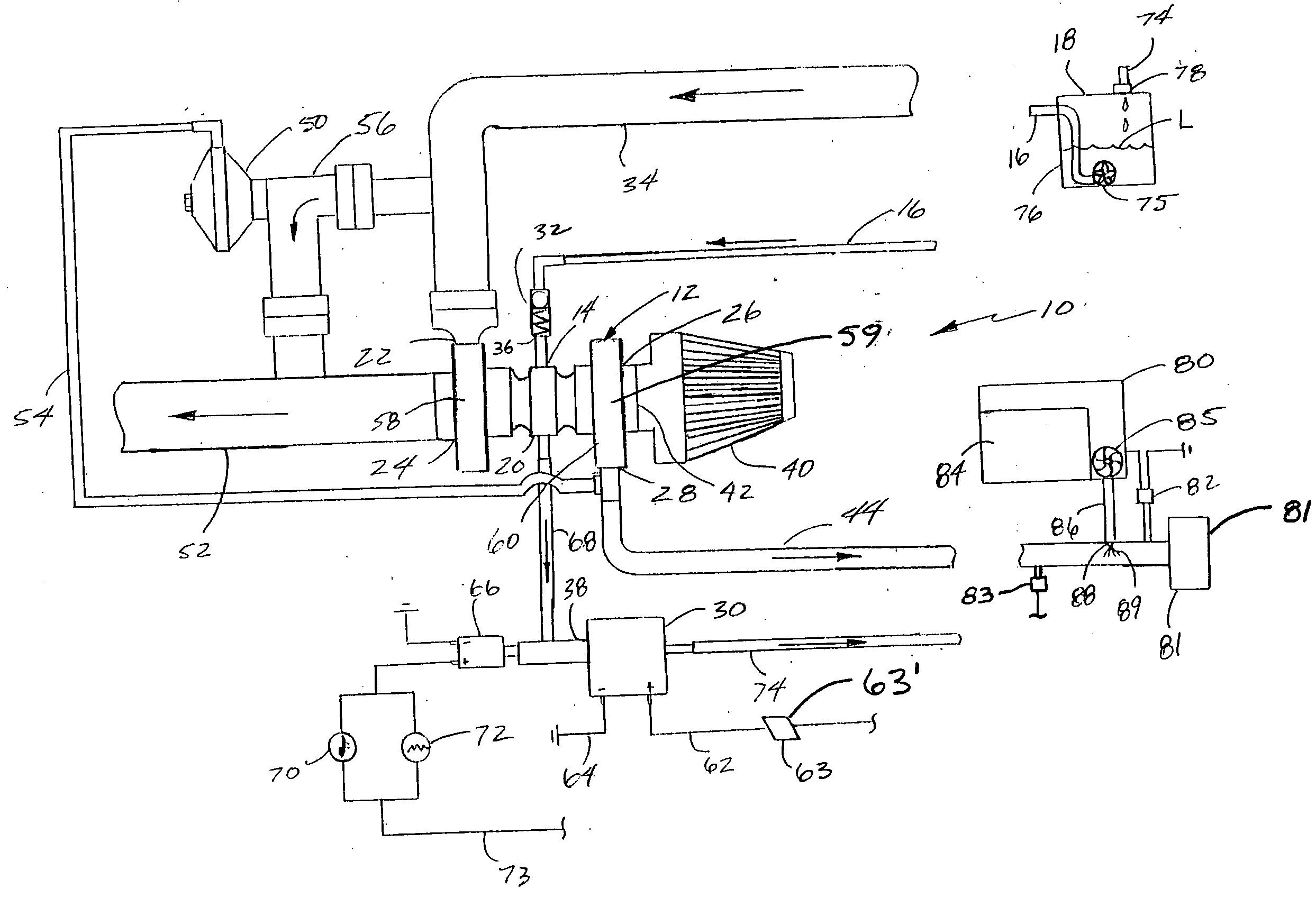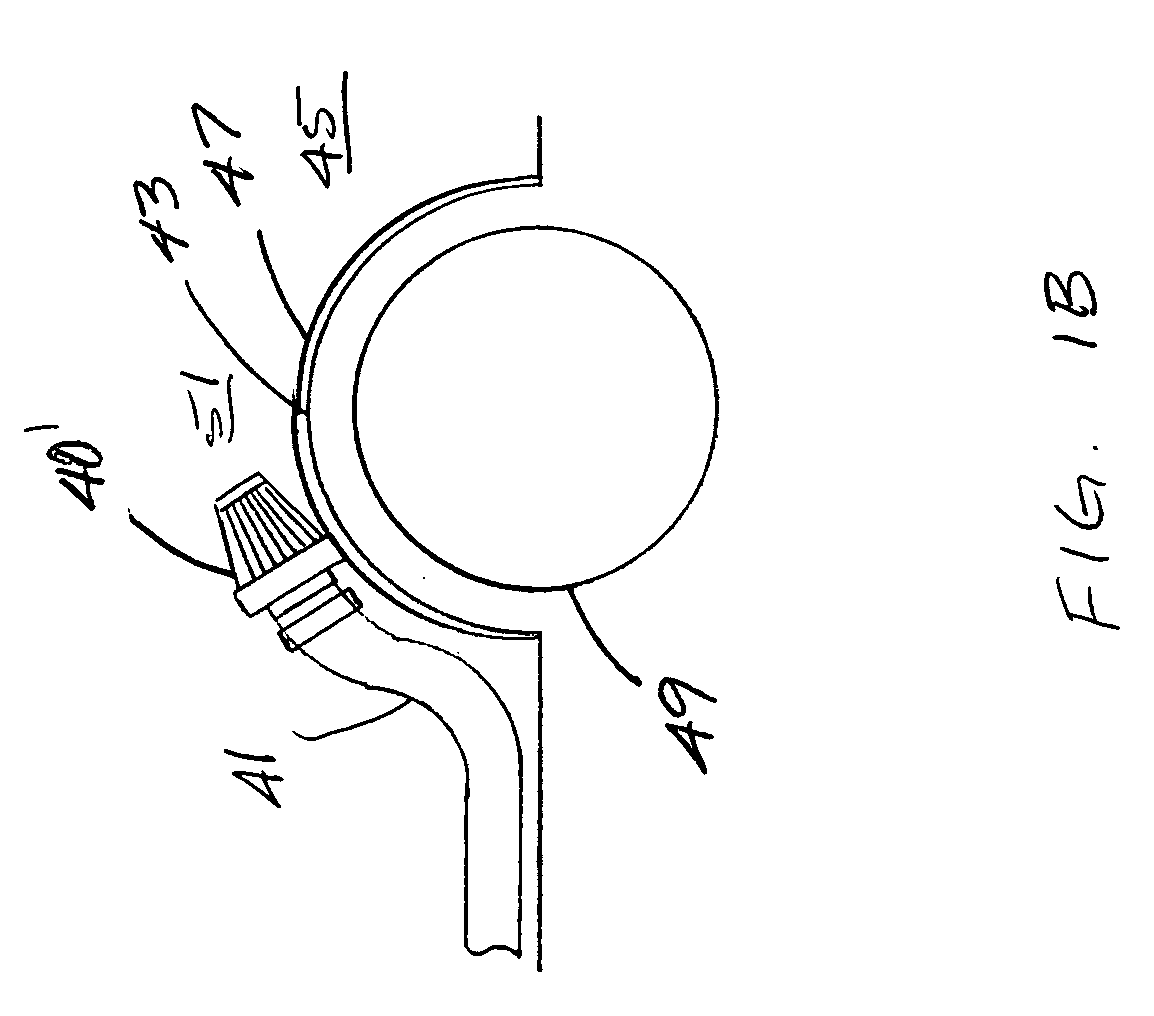Turbo system and method of installing
a technology of a turbocharger and a mounting method, which is applied in the direction of mechanical equipment, machines/engines, and non-fuel substance addition to fuel, etc., can solve the problems of damage to the bearings and shafts of the turbocharger, failure of the turbocharger, and “dry” conditions, so as to improve the performance and efficiency of the turbocharger, reduce the temperature of the turbocharger, and increase the consistency of the flow of gases
- Summary
- Abstract
- Description
- Claims
- Application Information
AI Technical Summary
Benefits of technology
Problems solved by technology
Method used
Image
Examples
Embodiment Construction
[0043] Referring to FIG. 1A, a turbocharger system, generally indicated at 10, for use with a combustion engine (not shown), is comprised of a turbocharger 12 having an oil inlet 14 configured for being coupled to the pressure side 16 of the oil pump 75 of an oiling system 18; and an oil outlet 20. The turbocharger 12 also includes an exhaust inlet 22 and outlet 24 on the turbine and an ambient air inlet 26 and a charge air outlet 28 on the compressor. An oil pump 30 in fluid communication with the oil outlet 20 is configured for being in fluid communication with the oiling system 18. A pressure driven check valve 32 is coupled to the oil inlet 14 of the turbocharger 12 and in fluid communication therewith. The check valve 32 is configured to prevent the flow of oil from the pressure side 16 of the oiling system 18 into the turbocharger when the pressure on the pressure side 16 of the oiling system 18 drops below a predetermined level. For example, a 5-psi check valve will close whe...
PUM
| Property | Measurement | Unit |
|---|---|---|
| temperatures | aaaaa | aaaaa |
| pressure | aaaaa | aaaaa |
| exhaust pressure | aaaaa | aaaaa |
Abstract
Description
Claims
Application Information
 Login to View More
Login to View More - R&D
- Intellectual Property
- Life Sciences
- Materials
- Tech Scout
- Unparalleled Data Quality
- Higher Quality Content
- 60% Fewer Hallucinations
Browse by: Latest US Patents, China's latest patents, Technical Efficacy Thesaurus, Application Domain, Technology Topic, Popular Technical Reports.
© 2025 PatSnap. All rights reserved.Legal|Privacy policy|Modern Slavery Act Transparency Statement|Sitemap|About US| Contact US: help@patsnap.com



